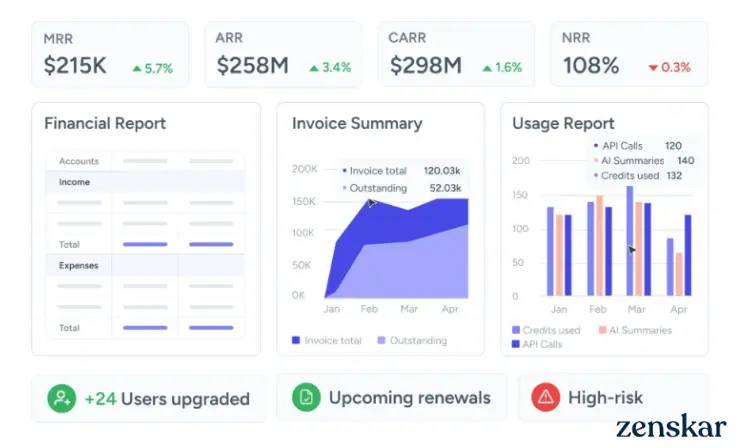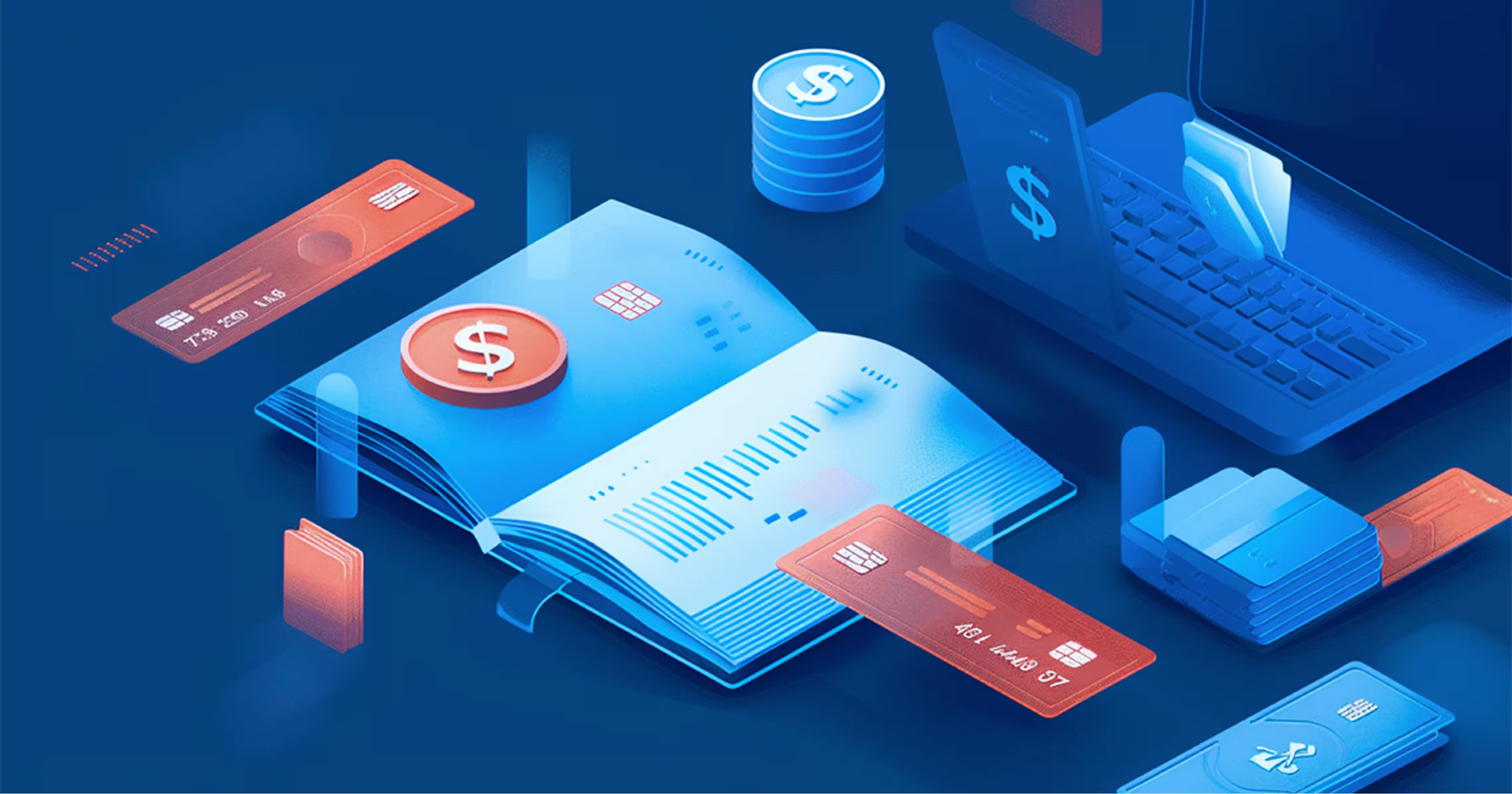What Is Self-Serve Financial Reporting And Why It’s The Future?
%20be%20truly%20invisible_.webp)
Financial reporting expectations have shifted from monthly bottlenecks to real-time intelligence. Yet many firms still adopt legacy tools that slow them down. These tools demand manual reconciliation, introduce errors, and restrict data access to only finance or IT teams. As a result, business leaders wait days for insights they need.
Modern financial reporting demands accuracy, speed, and accessibility. Self-serve financial reporting delivers all three. It empowers not just the CFO’s office, but all across the firm to access real-time data and make smarter decisions.
In this blog, we’ll explore what self-serve financial reporting really means, why it matters, and how companies can implement them successfully.
What is self-serve financial reporting?
Self-serve financial reporting is a modern, user-driven approach that empowers business teams to generate on-demand reports without relying on IT or finance teams. It empowers sales, marketing, product, operations, and finance teams alike to access real-time insights and act with speed and confidence.
Today’s business world is complex and rapidly changing. Success depends on access to real-time data to make better decisions and respond swiftly.
Imagine you’re the Head of Sales at a SaaS firm. Your competitor had announced a pricing update recently and you need to analyze churn across different products before revising your pricing plan. Legacy tools don’t keep up with the pace of change and are out-dated. With self-serve financial reporting, you can obtain this data within minutes.
Self-serve financial reporting democratizes access to business insights across the firm. At the same time, these self-serve tools protect data integrity by limiting access to confidential business information.
Why do most self-serve tools not live up to the promise?
While self-serve financial reporting offers great value to firms, many self-serve platforms fail to deliver on their key promise.
Many self-serve platforms require huge upfront investment to integrate with the firm’s systems. They often require employee training to understand and use the platform effectively. Despite offering numerous “pretty” features, these tools lack a strong focus on business needs.
These self-serve platforms are not truly “self-serving”. They fall short of empowering users to make their decisions, by prioritizing complexity over usability.
As legacy self-serve financial reporting tools often need specialized training, their benefits are limited to those who have been trained. Often, it’s only the finance team. If finance still owns the keys, your firm is not self-serve. You’re just moving your bottleneck, instead of removing it.
Key pillars of high-impact self-serve reporting
The best self-serve financial reporting platforms keep the needs of firms at its heart.
1. Real-time data visibility
With real-time data access, you can load and refresh to have the most recent information within seconds.
2. Data democratization across the firm
They empower every individual, across roles and departments, to access and analyze data independently. It breaks down the gatekeeping guardrails built by legacy tools.
3. Trust and data integrity at scale
Self-serve financial reporting tools have robust data governance frameworks that automatically validate data to ensure accuracy and consistency.
4. Customization
You can get dashboards and insights tailored to your role, so that you can see what matters most to you.
Top business benefits of self-serve financial reporting
Adopting a self-serve financial reporting tool can improve business performance and create a lasting organizational impact.
1. Frees finance and analytics team for higher value work
Reduces time spent by teams on manual reporting and data access management, allowing them to focus on core business areas.
2. Enhances decision making through data-driven analysis
Make business choices backed by scenario planning, forecasting, and ad-hoc analysis.
3. Drives cross-team collaboration and transparency
Create a shared view of business performance with data access across teams.
4. Instant insights enable rapid, decentralized decision making
Empower teams to act quickly based on up-to-date data and business insights.
5. Automates compliance and audit trails
Ensure compliance with in-built checks and audit trails that improve data reconciliation discipline and reduce errors
Core features that separate elite self-serve platforms from the rest
Elite self-serve platforms combine usability, scalability, and intelligence. They offer:
- Secure, role-based access: You can ensure the right people view the right data with access controls.
- Drag-and-drop creation: You can create visual dashboards with a few clicks and no formula.
- Conversation AI analytics: You can ask queries in natural language and get answers instantly.
- Unified data source: You can integrate all data systems for one reliable view of business performance.
- Deep customization: You can apply custom tags, access built-in templates like MRR, ARR, churn, or design new ones to suit your needs.
- Automated monitoring and alerts: You can get real-time alerts as these tools track your key metrics automatically.
Adoption blueprint – How to implement self-serve financial reporting (and win)?
Even the best self-serve platforms can deliver value only when implemented thoughtfully. Clear strategic objectives and strong adoption strategies drive success.
Step 1: Define goals and KPIs before launch
You need to answer the ‘why’. Before adopting any self-serve financial reporting tool, clearly define the business objectives you want to achieve. Next, translate these into measurable KPIs.
Step 2: Ensure data quality and governance systems
The power of a self-serve financial reporting platform rests on the integrity of its data – a single accurate source. To achieve this, integrate the platform with all relevant systems such as your ERP, CRM, billing system, and SaaS applications.
You have to develop governance mechanisms to mitigate data security risks. You need to define who would have access to what data. You can democratize data access, while limiting access to classified information.
Step 3: Pilot with power users and executive sponsors
Begin small, but strategic. Launch a pilot program with power users and executive sponsors. Power users understand both business needs and analytics, while executive sponsors can help champion the initiative firm-wide pre-rollout. This helps build credibility and momentum.
Step 4: Train, document, and build a ‘champions’ network
Empower users with knowledge. Provide training and easy-to-follow documentation that highlights how they can extract insights on their own. Create a ‘champions’ network of early adopters to guide peers and drive continuous adoption across the firm.
Step 5: Roll out access and monitor usage
Expand access to users across the firm once confidence is built. Encourage them to explore, customize, and self-serve their own analytics. Monitor usage and adoption metrics and identify training needs.
Step 6: Iterate based on feedback
Implementation does not stop with initial adoption. Gather feedback from users, and iterate on workflows. Refining the experience ensures that your platform evolves with your business priorities.
Successful firms treat self-serve financial reporting as an ongoing process, rather than a one time deployment.
Common mistakes and how to avoid them
Even with the right tools, self-serve financial reporting initiatives fall short due to missteps.
1. Allowing data silos to persist
Often, financial data continues to remain fragmented across the firm even after adopting self-serve tools. This results in decisions based on out-dated and inaccurate data.
How to avoid it? Invest in a unified finance system that integrates all financial and accounting data. Ensure everyone has access to a single shared source of business truth.
2. Under-investing in role-based controls and training
Success of self-serve platforms is driven by its users. Without proper role-based controls, you risk data security. Without proper training, you risk stagnation in adoption of self-serve financial reporting.
How to avoid it? Define clear access hierarchies within the firm. Complement this with continuous learning initiatives to help users make effective use of the tool.
3. Failing to measure ROI and adoption
You can control only what you measure. Many firms fail to track ROI or adoption making it difficult to analyse the impact of a self-serve financial reporting initiative and justify continuous investments.
How to avoid it? Define clear measurable KPIs for success of the self-serve initiative before launch and track progress regularly.
4. Limiting scope to finance
When self-serve financial reporting is treated as a finance-only tool, its potential is wasted.
How to avoid it? Position self-serve financial reporting as a firm-wide capability. Encourage teams to create shared dashboards that align them to common business goals.
The AI-Powered future: Why self-serve is just the beginning?
The next generation of self-serve financial reporting will be driven by intelligence, not just accessibility.
Finance AI agents will analyze trends, detect anomalies, and offer proactive recommendations. They will offer forward-looking insights, not backward-looking summaries
Natural language querying will become the new spreadsheet interface. Teams can simply ask, “What’s our profits this quarter?” and receive instant answers, with no formula and filters.
As analytics evolve from on-demand to always-on, insights will become more continuous. This new era redefines decision-making speed and confidence. AI will boost analytics to move from reacting to change to anticipating it.
Zenskar sets the gold standard in self-serve financial reporting
In an era where speed and accuracy define business success, Zenskar reimagines financial reporting with intelligence, automation, and scale.
Go beyond dashboards with Conversational AI
Modern self-serve platforms need to be more than just static dashboards. They need to be interactive and AI-driven. With Zenskar’s conversational AI, you can simply ask natural-language questions like “What is the customer churn this month?” and get answers in seconds.
No SQL, no data modeling, and no manual setup. Within seconds, teams can:
- Generate presentation-ready charts and detailed reports
- Receive proactive recommendations and latest insights
This means faster answers and less dependence on IT/finance teams.

Achieve true revenue and performance visibility
A single source of truth matters. Zenskar unifies all data in one source, so that everyone can have a shared view about the business.
With Zenskar, you can:
- Track revenue, collections, and payments – all in one place real-time
- Make GAAP-compliant income statements, balance sheets, and cash flow statements.
- Monitor key metrics like churn and usage to drive customer demand
Such high levels of data visibility improves forecasting, and enables proactive decision making.

Built for scale and accuracy
As businesses grow, complexity in financial reporting multiplies. Self-serve reporting tools must scale as businesses scale, without compromising on data accuracy.
With Zenskar’s Analytics, you can:
- Slice and dice any report to understand revenue drivers with product, plan, segment, and usage breakdowns.
- Set up alerts on your metrics to stay in tune as your business hits new milestones
- Create and track specific segments with unlimited customization
This helps firms maintain agility in decision making even as their businesses grow.

Proven customer impact
Zenskar is a trusted partner for several fast-growing companies.
Indigov, a SaaS company, cut its month-end close time by 80% by automating revenue recognition with Zenskar.
Pontera, a fintech company, faced challenges with manual billing. Zenskar helped them automate and streamline their operations and save $12,000 monthly on manual hours.
Arm your leaders (and investors) with confidence
Self-serve financial reporting platforms equip C-suite executives with actionable insights for smarter business decisions and sustainable growth. They improve investor confidence and trust with transparent reporting.
Take a product tour today, see Zenskar in action.
SquadStack Case Study: Streamlining Billing with Zenskar

Frequently asked questions
If a company’s finance teams spend hours every week building reports in Excel or depend heavily on BI teams, they’re ready for self-serve financial reporting.
Zenskar’s platform unifies billing, revenue, and analytics, enabling real-time customizable self-serve reporting without code or IT help.
Yes, Zenskar offers GAAP-compliant financial reporting through its self-serve analytics.
Yes, self-serve analytics democratizes data access across teams within the firm.


















.webp)






